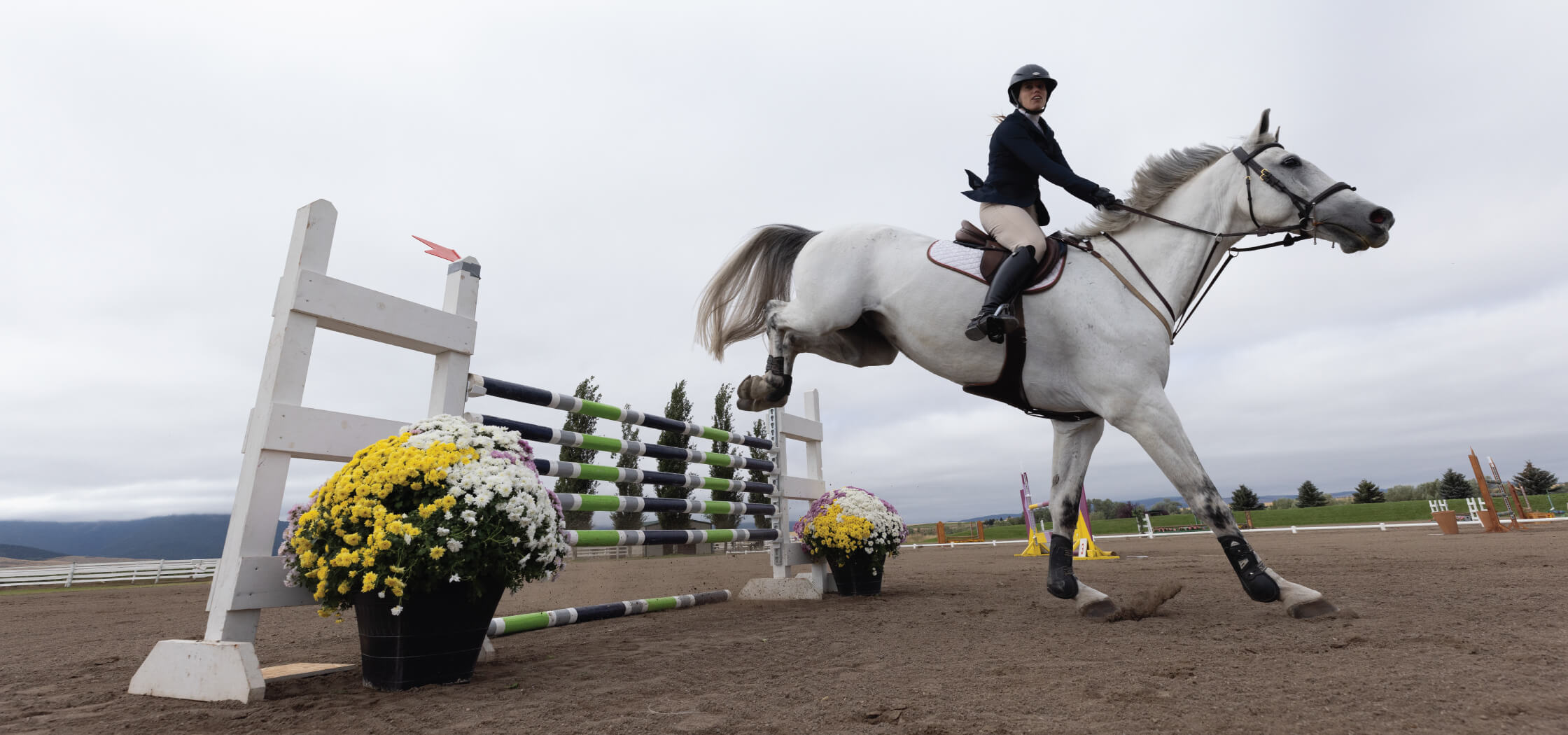The Role of Good Footing
by Boehringer Ingelheim / May 17, 2024

The Importance of Good Footing
Establishing and maintaining proper footing can sometimes feel like Goldilocks trying to find that “just right” bowl of porridge: too hard, too deep, too wet, too dry. While the definition of perfect footing varies by discipline and activity, ensuring that the footing you’re riding on is appropriate for what your horse is being asked can mean the difference between peak performance or a potentially severe injury.
Why Good Footing Is So Critical
The importance of riding on proper footing becomes clear when you look at the way a horse’s body moves and functions.
“In a 1,000-pound horse, each stride at the gallop results in 2,500 pounds of pressure on the single landing limb,” said Trent Bliss, DVM, Professional Services Veterinarian at Boehringer Ingelheim. “Certain movements, such as jumping, sliding or cutting, can put additional pressure on the horse’s bones, cartilage, tendons and ligaments.”
While the horse’s musculoskeletal system is designed to naturally absorb some of this pressure, repeated impacts over time can cause damage to the joints or soft tissues.1 Proper footing will absorb some of this impact, and help to relieve additional stress on the musculoskeletal system.
How Footing Varies by Discipline
Each discipline requires a slightly different type of footing to help the horse perform at its best. For jumpers, it needs to be solid enough for a horse to push off from, but soft enough to absorb the shock of landing. For reining horses, the right footing is a loose mixture that allows for sliding stops.2
“Ensuring that you’re training and competing on appropriate footing for your discipline is not only important to the horse’s performance, but also their health,” explained Dr. Bliss.
If the footing is too hard for the task that is being performed, it absorbs less impact, thus increasing the likelihood of bone and joint injuries.1,3 Conversely, if the footing is too soft (also referred to as too deep), tendons and ligaments are more likely to overstretch, potentially causing soft-tissue injuries.2
Footing Management
Proper management of the arena can help keep the footing in prime condition and reduce the risk of injury. Sand and dirt arenas should be watered frequently to maintain an appropriate amount of moisture in the footing and avoid deep, loose sand. Watering the arena can also help limit the amount of dust in the air, and keep the lungs of both horses and humans healthy. Depending on how heavily trafficked the arena is, it should also be dragged anywhere from once a week to multiple times a day, to reduce the amount of hard or slick spots. It is also recommended to overhaul the arena footing every couple of years, as it will gradually break down over time.
Avoiding Injury
In some cases, such as at a horse show, the footing in the arena may be out of your control. However, there are ways to prepare your horse to make sure they are set up for success and avoid injury. Working your horse on different types of footing promotes both positive musculoskeletal health and mental health.1,3
"If you regularly train in an indoor sand arena, consider hacking out in a grass field every once in a while,” recommended Dr. Bliss. “This change in footing helps your horse with proprioception, or knowing where their feet are.” Of course, outdoor footing is always at the mercy of Mother Nature. Use your best judgment when riding in any kind of weather, and work with your trainer and/or veterinarian to make the best decision for your horse.
While there is no one-size-fits-all perfect footing, knowing what footing is ideal for your horse’s discipline, performing frequent arena maintenance, and training on different types of footing can help set your horse up for safe and successful riding.
REFERENCES
1 Hobbs SJ, Northrop AJ, Mahaffey C. Equine surfaces (white paper). British Equestrian Federation. Pp. 1–7. Available at: https://inside.fei.org/system/files/Equine%20Surfaces%20White%20Paper.pdf. Accessed May 9, 2023.
2 Fabian EE. Riding arena footing material selection and management. Penn State Extension, College of Agricultural, The Pennsylvania State University. Available at: https://extension.psu.edu/riding-arena-footing-material-selection-and-management. Accessed April 24, 2023.
3 Leste-Lasserre C. Horse arena footing facts. The Horse 2023. Available at: https://thehorse.com/188622/horse-arena-footing-facts/. Accessed April 24, 2023.
©2025 Boehringer Ingelheim Animal Health USA Inc., Duluth, GA. All rights reserved. US-EQU-0132-2024






